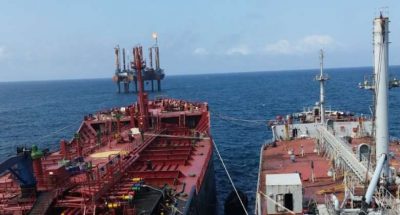Government, through the Ghana National Petroleum Corporation (GNPC), is set to decommission the Saltpond Oil Field Project by March, this year.
Government, through the Ghana National Petroleum Corporation (GNPC), is set to decommission the Saltpond Oil Field Project by March, this year.
The move will reduce the huge cost of skeletal staff maintaining the rig, which had become an economic drain on the state.
Dr Kwame Baah-Nuakoh, the General Manager, Sustainability and Stakeholder Relations at the GNPC, disclosed this at an external stakeholders’ engagement on the processes of the decommissioning project.
The engagement was to get the stakeholders informed on how the process would be carried out, the risks and benefits, and possibility of a spill that could endanger lives and property.
He explained that the Field, the nation’s premier oil producing field, was not producing any more oil, hence the need to decommission it to reduce unwarranted expenditures.
Dr Baah-Nuakoh said commissioning a rig came with careful planning and so the GNPC, with the consent of the Ministry of Energy, embarked on a two-phased programme to dismantle the field.
The first phase involved preparation of a comprehensive decommissioning plan, while the second phase would embark on the decommissioning in March, which would take 12 months to complete.
Plugging and removal of conductor pipes, dismantling the topside of the rig by name “Mr Louie,” and site remediation are part of the project scope.
On the background of the project, Mr Baah-Nuakoh said the Saltpond Oil Field was discovered in 1970 and operated by the Signal-Amoco Consortium, which relinquished it in 1976 to offshore Hydrocarbon Limited, citing the field as non-commercial.
Offshore Hydrocarbon later entered into a development farmout with Agri-Petco of USA and between 1977 to 1978 it drilled six appraisal wells from a centrally located jack-up rig “Mr Louie.”
After the drilling, the jack up was converted into a production unit and the field was on-stream in October 1978, Mr Baah-Nuako said.
In 1984, the field was reassigned to Primary Fuel Incorporated, which operated for a year and handed it over to GNPC in July 1985.
Between 1978 to 1985 the maximum cut production was 4,800 barrels a day, dwindling up to 580 barrels per day when operations were halted at a time crude prices on the world market was all time low.
He said when oil prices began to appreciate in around 2000, the GNPC, on January 18, entered into agreement with Lushan International of Houston, Texas for the rehabilitation of the field.
Lushan International also contracted Eternit Universal Limited of Nigeria to finance the rehabilitation works.
In August 2000, rehabilitation works commenced with the repair of “Mr Louie” platform and upon completion, only two wells were able to produce between 480-600 barrels per day.
In 2002, government renegotiated the deal between the GNPC and Lushan-Eternit Energy Ltd, allowing it to take a share of 45 per cent while Lushan-Eternit took the rest of the shares under a new entity; Saltpond Offshore Producing Company Limited (SOPCL) in 2004.
Additionally, In June 2010, the GNPC announced that it was pulling out of the SOPCL leasing contract since the company was unable to pay its outstanding bill, which thereafter called for the decommissioning of the rig.
The stakeholders pledged their commitment to supporting the decommissioning process to end successfully.

COMMENTS